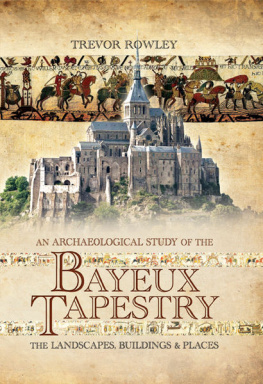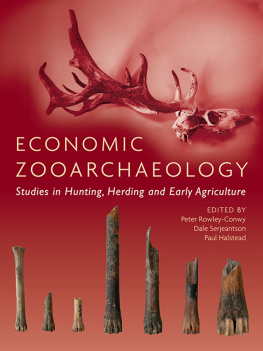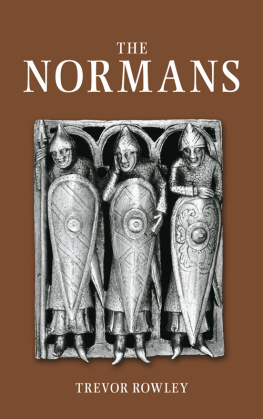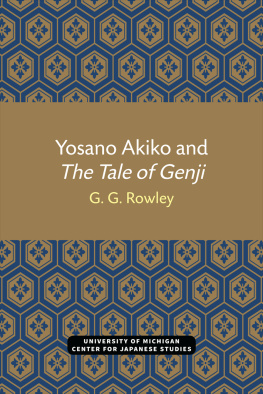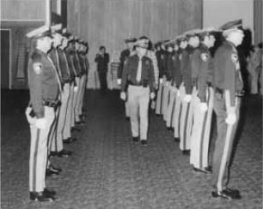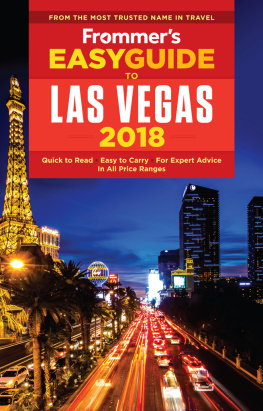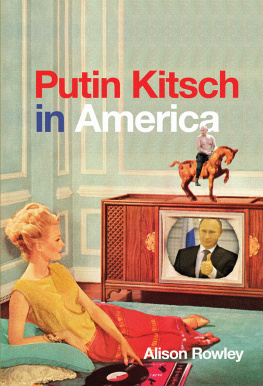University of Nevada Press, Reno, Nevada 89557 USA
Copyright 2013 by University of Nevada Press
All rights reserved
Manufactured in the United States of America
Design by Kathleen Szawiola
Portions [or Parts] of were included in Religion in Sin City, GEO REVIEW (American Geographical Society) 102, no. 1 (2012): 76-92, and are reprinted with permission.
Library of Congress Cataloging-in-Publication Data
Rowley, Rex J., 1977
Everyday Las Vegas : local life in a tourist town / Rex J. Rowley.
p. cm.
Includes bibliographical references and index.
ISBN 978-0-87417-905-7 (cloth : alk. paper) ISBN 978-0-87417-906-4 (ebook)
1. Las Vegas (Nev.)Description and travel. 2. Las Vegas (Nev.)Social conditions21st century. 3. Las Vegas (Nev.)Social life and customs21st century. 4. Working classNevadaLas VegasSocial life and customs. 5. TourismSocial aspectsNevadaLas Vegas. 6. Working classNevadaLas VegasInterviews. I. Title.
F849.L35R69 2013
979.3'135dc23 2012037472
PREFACE
This book is about my city. Although I grew up in Las Vegas, it was only much later that I realized what a unique place it is. When I tell someone where I am from, I often encounter weird looks, puzzled reactions, and surprised excitement. I have come to enjoy such moments, as they reinforce the connection I feel to a city perceived as exotic and strange to people across the country and around the globe. Being from a unique place gives me a sense of pride in my own identity; because of my hometown, I feel I too am different. The guy from Las Vegas is often the one who gets attention in a crowded room.
Yet, at such times, I also think to myself: Was my life in Las Vegas really all that different from someone living in any other American city? As I formalized my training as a professional geographer, I realized that the answers to such a question are not so simple. Places are complex things, and take on different personalities for different people; perceptions of a place are, after all, based on the experience each person has within it. Tourist locations, such as Las Vegas, have a particularly bifurcated personality: insider residents see the place through their experiences of work, worship, play, and raising a family, whereas outsiders imagine the same location through a set of tourist perspectives. While not so pronounced, a similar pattern exists for nontourist places; visitors and passers-through will always see a place differently than longtime residents. I realized my city might be unique, but the reality of my place attachment based on insider familiarity is not unlike the experience of millions of humans in thousands of towns and cities around the world. Las Vegas is simply a place where the insider/outsider division is starkly evident.
Because of the huge media campaigns and the millions of tourists who visit the city each year, the outsider's image of Las Vegas is often the only one talked about. Roughly two million people live in the areas surrounding the Strip, but their stories often go untold, to the point that some outsiders don't believe people actually live in Las Vegas. Given the unique nature of the desert metropolis and the fact that it is the quintessential example of the insider/outsider dichotomy so common in places, I felt that that pattern and how it plays out here (and, by extension, elsewhere) needed a book-length exploration.
I set out to portray the other side of this bifurcated place and sought to answer slightly altered versions of the question I had been asking myself: What is life in Las Vegas like for local residents, and how do they interact with the tourist side of the city? What do such interactions say about the city's personality and sense of place? I try to answer these and related questions through an ethnographic approach that included interviewing more than a hundred residents, participating in local culture and activities, and keeping a finger on the pulse of the community through its newspapers. As a geographer, my focus is on place identity as constructed through human interactions within certain spaces. I dig deep into the stories, anecdotes, and insights of residents living in this cityespecially within the spatial context of the tourist destinationto construct a perceptual map of life in this unique place that evokes its bifurcated personality. Seeing this one exemplary city in such a light will lead to other questions and answers regarding how we as humans see and interact with all our places.
Although the cover has my name on it, I could not have completed this book without the help of others. My gratitude begins and ends with my family. My wife, Rachel, has read (and reread) every word of this book. She has listened to my complaints, offered solutions to my research and writing dilemmas, and opened a willing heart and mind to the sacrifices our family would make to see this book through.
Our childrenMatthew, Caleb, Laurelin, Maggie, Rex, and Samhave been patient with their dad as he worked many late nights and postponed playing more games of catch or tag or Slapjack in order to finish his education and this book. I thank them for their smiles, hugs, and simple, yet impressive words of encouragement.
My mother and father, Rexine and Dennis Rowley, provided material support for my work, a place to live in Las Vegas while I conducted my research, and even became research assistants when I needed a photograph or two and could not make the trip back home. They have always encouraged me to believein example and spoken wordthat I could do and be anything. I also owe gratitude to my siblings and grandparents for their friendship and heritage. I give special thanks to my late grandfathers, Richard Rowley, whose life as a writer and college professor inspired me, and Rex (Pop) McAllister, my namesake, friend, and the most ardent supporter of my chosen profession.
I thank Pete Shortridge for his guidance on the project, from inception to completion. The idea for this book came out of a lecture he gave in his cultural geography class during my second year as a graduate student. My love for place and the inner workings of how humans interact with their geography expanded through many chats with him over the decade that followed.
I also want to recognize the contributions and encouragement of colleagues: Terry Slocum, Garth Myers, So-Min Cheong, Steve Egbert, Dave McDermott, Carol Bowen, Linda Sue Warner, Jon Thayn, and Rich Waugh. Thanks to Bill Tsutsui for providing validation that this portrait of Las Vegas would be of interest to people outside my sometimes insular geography bubble.
Thank you to Matt Becker for his enthusiastic reception of this project and for seeing its potential as a book. He and the staff at the University of Nevada Press have shepherded me along a heretofore-untraveled road of professional publication. I appreciate the effort of the reviewers and editors and express gratitude to John Kostelnick and Kathleen Szawiola for their help when it came to producing the maps I have included.
Finally, I thank my fellow everyday Las Vegans, past and present, for making this city what it is and for opening their doors and minds to me and giving me something special to write about. This book is my effort to characterize the place they have built. I hope that my interpretation of their words has done justice to the ideas and impressions they shared in conversations about our place in the desert.





